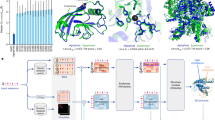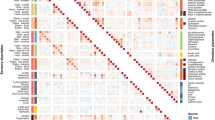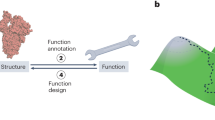Abstract
ALTHOUGH prussian blue has been known since 1704, and has long been an important pigment, its chemistry has never been satisfactorily explained. The whole subject is surprisingly confused in spite of the large volume of work which has been published. The structures of prussian blue and of some associated compounds have recently been determined at this Company's Ardeer Factory by X-ray analysis. The powder method was used.
This is a preview of subscription content, access via your institution
Access options
Subscribe to this journal
Receive 51 print issues and online access
$199.00 per year
only $3.90 per issue
Buy this article
- Purchase on Springer Link
- Instant access to full article PDF
Prices may be subject to local taxes which are calculated during checkout
Similar content being viewed by others
References
Howe, J. Amer. Chem. Soc., 18, 983 (1896).
Author information
Authors and Affiliations
Rights and permissions
About this article
Cite this article
KEGGIN, J., MILES, F. Structures and Formulæ of the Prussian Blues and Related Compounds. Nature 137, 577–578 (1936). https://doi.org/10.1038/137577a0
Issue Date:
DOI: https://doi.org/10.1038/137577a0
This article is cited by
-
Rechargeable sodium-ion battery based on a cathode of copper hexacyanoferrate
Journal of Solid State Electrochemistry (2023)
-
Prussian blue technique is prone to yield false negative results in magnetoreception research
Scientific Reports (2022)
-
Prussian blue: from advanced electrocatalyst to nanozymes defeating natural enzyme
Microchimica Acta (2022)
-
Some considerations on the structure, composition, and properties of Prussian blue: a contribution to the current discussion
Ionics (2021)
-
Hidden diversity of vacancy networks in Prussian blue analogues
Nature (2020)
Comments
By submitting a comment you agree to abide by our Terms and Community Guidelines. If you find something abusive or that does not comply with our terms or guidelines please flag it as inappropriate.



